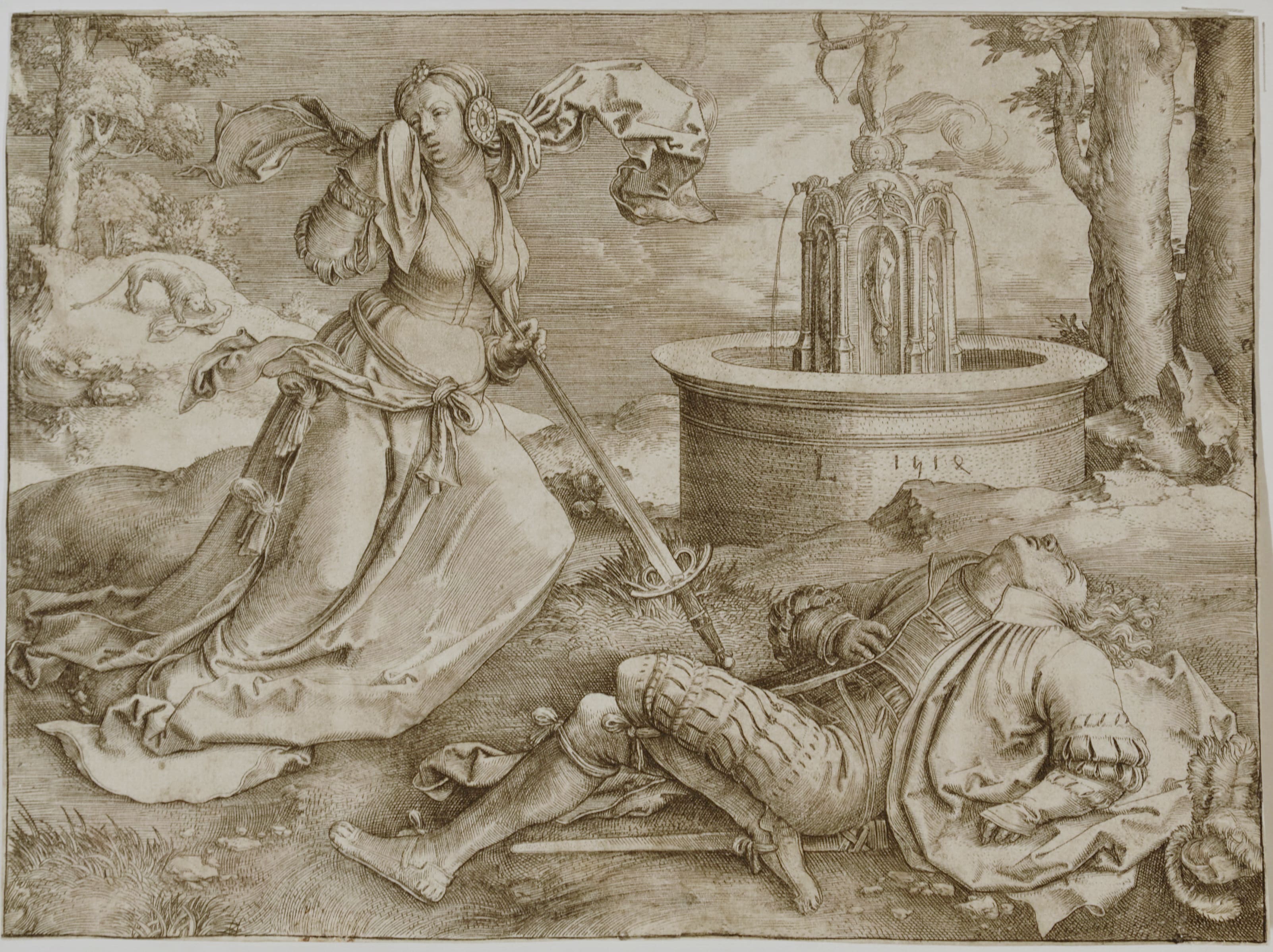
Author:
Lucas van Leyden ( Leiden, circa 1494 – 1533)
Name:
Pyramus and Thisbe
Creation time:
1514
Place of origin:
Netherlands
Material:
paper, engraving
Size:
163х120
Inventory #:
2902 ГР
Source origin:
Donated by Vasyl Shchavynsky (1868 - 1924)
expositions:
"Donated by Vasyl Shchavynsky 24.01.2020 - 18.04.2020"
Section:
European engravings
Description
The story of fated lovers Pyramus and Thisbe is famous from ancient times. However, the first known literary version is found in Ovid’s “Metamorphoses”.
Relatives separated the young lovers Pyramus and Thisbe, but they found a way to communicate through a crack in the wall separating their households. Thus, they agreed to run away and decided to meet in the cemetery, near a spring, under an old mulberry tree. Thisbe came first, but at the meeting point she saw a lioness, covered in blood of recently killed prey.
Frightened, the girl ran away, and the lioness tore the mantel she had lost. Shortly afterwards, Pyramus found only the bloodied veil of his beloved and the footprints of lion’s paws. Concluding that Thisbe has died, he stabbed himself with a sword. His blood splashed the white mulberries. Thisbe, upon returning, found her lover dead and finished herself with the same sword. Before her death, she prayed to the gods that in memory of the fated lovers, the mulberries would forever remain as red as they became from the blood of Pyramus.
“Metamorphoses” were the source from which artists and writers borrowed plots for many centuries to come. The story of Pyramus and Thisbe was one of the most frequently addressed. Curiously, in the Middle Ages it was interpreted in moral and religious terms.
The preachers of the 15th century found inspiration in the “Moralized Ovid” of 1340 and its later adaptations. In their interpretation love story of Pyramus and Thisbe was an allegory of perfect love between Christ and the human soul. The wall that separated lovers in legend was seen as an original sin, the spring, near which they agreed to meet symbolized the sacrament of baptism, and the lioness was interpreted as the devil.
Suicide of Pyramus was compared to the Christ’s sacrifice on the cross, mulberry, painted with his blood, was the cross itself. Thisbe, who kills herself with the same sword, is a soul that, through compassion for the sufferings of Christ, is purified and united with him. According to a different interpretation, Thisbe represented the Virgin Mary, whose heart was pierced by the invisible sword of suffering when Christ died upon the cross. The Dutch playwrights of the 16th century interpreted this legend in the same way.
It seems, however, that Lucas van Leyden in his work focuses more on the sensual component of the story. His vision might have been influenced by the interpretation of this plot as a warning against the dangers of passion and the destructive power of love.